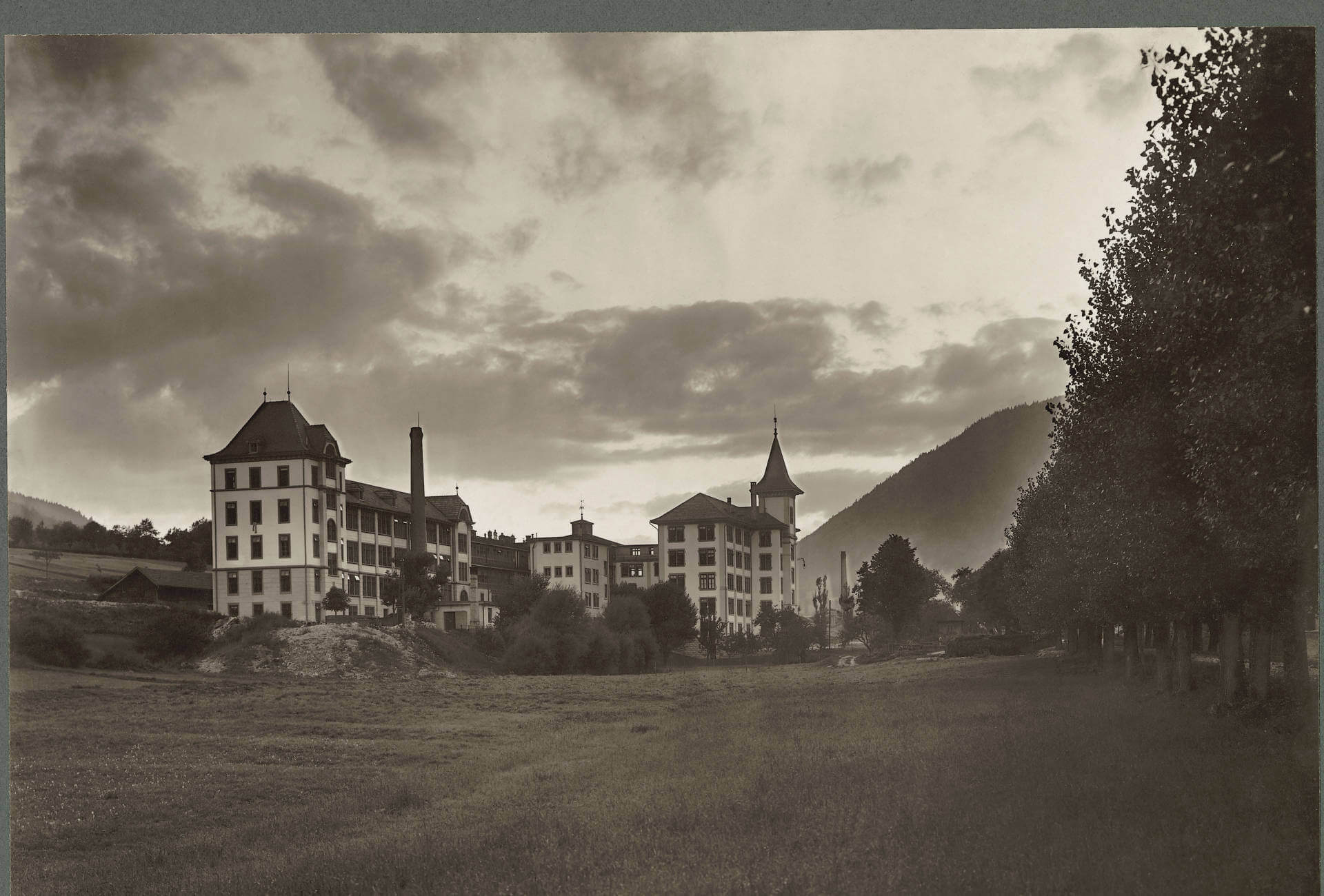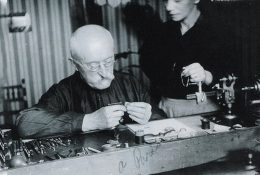The millions it cost the Swiss Confederation to keep the Swiss watch industry afloat in the aftermath of the First World War was money well spent. Cartel agreements which prevented manufacturers from undercutting prices and imposed exclusively Swiss suppliers, thereby preserving the division of labour at the heart of the établissage system, strengthened Switzerland’s dominance of the global watch market during the inter-war period. This dual protectionism prevented foreign manufacturers from using Swiss components; it also gave Swiss makers the exclusive benefit of the major innovations in the industry. These included the Elinvar balance spring, the Nivarox balance spring, the porte-échappement escapement plate and the pare-choc shock absorber system, to name but some.
By the second half of the 1930s the Swiss watch industry had succeeded in defending the territoriality of établissage.
This market dominance was further reinforced when in 1924, then in 1934, two of the main employer federations introduced the principle of a hallmark, under the control of federally approved assay offices, that would protect Swiss quality on foreign markets. The Federal Bureau for Intellectual Property in Berne was tasked with registering these hallmarks with its international counterpart, thereby ensuring protection on a worldwide scale. As the historian Johann Boillat notes in this article (in French), by the second half of the 1930s the Swiss watch industry had succeeded in defending the territoriality of établissage, having strengthened its industrial fabric from the perspective of both trade and technology. Up to the 1950s, this lucrative system continued to benefit from the protection of the Federal Department of Economic Affairs and employer federations.
Quantity vs. quality
Such an idyllic situation couldn’t go on indefinitely, especially as foreign competition made the limits of Switzerland’s industrial structures painfully clear. Come the 1950s, Swiss manufacturers found themselves competing against inexpensive, mass-produced watches from the United States and Japan. Switzerland’s watchmakers were prevented by law from offshoring low-value-added production, in particular external components, yet this was precisely the business model that established Timex as the world’s number-one watchmaker. The American firm applied expertise gained in ammunition production during the Second World War to its watch production, which increased from one million units in 1949 to 22 million units in 1969. Hot on its heels was Seiko, which began production-line assembly of its automatic watches in 1959. Meanwhile, the United States appeared poised for a trade war with Switzerland. Speaking to an assembly of American jewellery wholesalers, the President of Elgin National Watch Company warned of the need to “limit transactions with countries whose industry is governed by cartels.” This was a threat not to be taken lightly: the United States was the world’s largest market for watches, accounting for 35% of Swiss watch exports in volume terms in the 1950s.
There is a bipolarization between the non-rationalised production of quality watches and mass production of watches at the low end of the market.
Swiss watch manufacturers only had partial recourse to mass production. Watches sold at higher price points were still dependent on a fragmented system, including for components which continued to be made by a multitude of small, independent entities. This resulted in what the historian Pierre-Yves Donzé describes as “bipolarization between the non-rationalised production of quality watches and mass production of watches at the low end of the market. By merging these two models, i.e. mass production of quality watches, Japanese manufacturers established themselves as serious challengers to the Swiss on the global market.”
From CTM to Swiss Made
Faced with this competition, and the subsequent loss of market share for the main manufacturers, the industry began to put pressure on the federal authorities to ease restrictions, in particular the obligation to locate production within Swiss borders. Understandably, not everyone supported these demands to put an end to cartel agreements, starting with the movement and component suppliers in ASUAG which were in no mood to relinquish their monopoly. Despite opposition, changes were made that would open up the Swiss watch industry. This transition took place in three stages. The first, in 1952, abolished the minimum tariffs imposed by employer federations. Ten years later the last obstacles to trade were removed when export licences were abolished and foreign entities gained access to the Swiss market. A transitional period allowed the various stakeholders time to adapt to the new context. This wasn’t, however, the end of protectionism. Faced with a possible decline in quality as a consequence of relocated production, a law passed in 1961 introduced a series of minimum standards, known as Contrôle Technique des Montres (CTM), intended to “prevent the exportation of products liable to seriously undermine the reputation of the Swiss watch industry.”
Manufacturers of external components feared their profession would be sacrificed on the altar of competitiveness.
This was the first step towards the adoption of Swiss Made – enacted ten years later, in 1971, after lengthy discussions between the State and industry representatives. Manufacturers of external components feared that new measures would give priority to movement manufacturers at a time when precision was the single criterion that defined the quality of a watch, and that their profession would be sacrificed on the altar of competitiveness. These concerns were founded, as the ordinance that became law in December 1971 confirmed. Henceforth, a watch was Swiss when “the movement is assembled, adjusted and inspected in Switzerland and the constituent parts made in Switzerland represent at least 50 per cent of the value of all of the constituent parts.” Pierre-Yves Donzé makes the following conclusion: “Legislation governing the use of Swiss Made for watches should be seen as a pragmatic instrument whose objective is to protect the reputation of Swiss watches on global markets while increasing manufacturers’ competitiveness in terms of production costs – thanks to the use of foreign-made parts.” Some forty years later and after another round of long-drawn, hard-fought negotiations, Swiss Made became Swissness and the value of Swiss-made components was increased to 60 per cent. Another victory for Swiss pragmatism?















